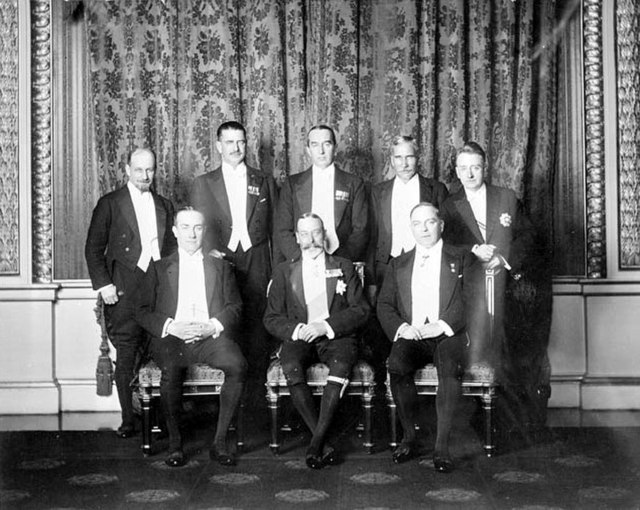The Imperial War Cabinet (IWC) was the British Empire's wartime coordinating body. It met over three sessions, the first from 20 March to 2 May 1917, the second from 11 June to late July 1918, and the third from 20 or 25 November 1918 to early January 1919. Consisting of representatives from Canada, Australia, India, the Dominion of Newfoundland, New Zealand, South Africa, and the United Kingdom, the Cabinet considered many aspects of waging the First World War. It led to the United Kingdom's Dominions being considered more equal to Great Britain and Ireland. Held concurrently with the cabinet were the Imperial War Conferences of 1917 and 1918.
Imperial War Cabinet, offset picture
Imperial Conferences were periodic gatherings of government leaders from the self-governing colonies and dominions of the British Empire between 1887 and 1937, before the establishment of regular Meetings of Commonwealth Prime Ministers in 1944. They were held in 1887, 1894, 1897, 1902, 1907, 1911, 1921, 1923, 1926, 1930, 1932 and 1937.
King George V (front, centre) with his prime ministers in 1926. Standing (left to right): Walter Stanley Monroe (Newfoundland), Gordon Coates (New Zealand), Stanley Bruce (Australia), J. B. M. Hertzog (Union of South Africa), W. T. Cosgrave (Irish Free State). Seated: Stanley Baldwin (United Kingdom), King George V, William Lyon Mackenzie King (Canada).


